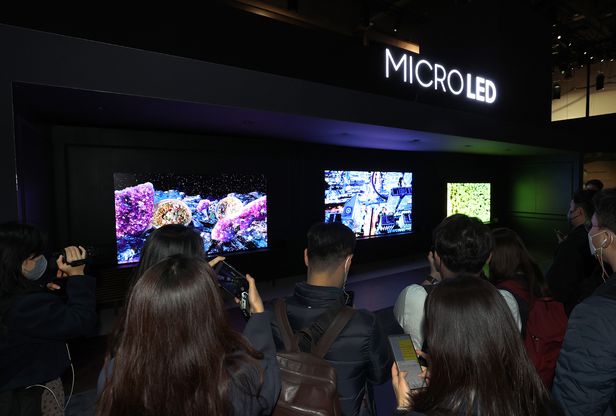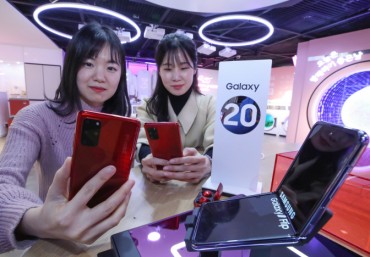
This photo provided by Samsung Electronics Co. on Jan. 3, 2022, shows The Frame, one of its Lifestyle TVs.
SEOUL, Feb. 9 (Korea Bizwire) – Global TV shipments are forecast to slightly rebound this year amid falling LCD panel prices, with high-end TVs continuing to enjoy robust growth, industry reports said Tuesday.
The industry tracker Trendforce expected global TV shipments to reach around 217 million units this year, up 3.4 percent from a year ago.
The estimated shipments still remain at the lowest levels since 2017, as the pandemic-led demand for TV has peaked out.
Global TV shipments slid to 210 million units in 2021 from 217 million units in 2020 and 218 million units in 2019.
According to Display Supply Chain Consultants (DSCC), LCD TV panel prices have continued to fall since last summer due to declining TV demand and increasing supply, although the pace of the decline is slowing.
DSCC expected price declines in the first quarter to average 14 percent, with 49-inch, 50-inch and 55-inch panels experiencing the most severe price falls of more than 20 percent.
Against this backdrop, global TV manufacturers are expected to produce more small-to-medium sized TVs this year. TV makers reduced the production of the segment in the first half of last year and switched to more large-size, premium TVs for higher margins.

OLED televisions by LG Electronics Co. are on display at an electronics store in Seoul on Oct. 12, 2021. (Yonhap)
Against this backdrop, global TV manufacturers are expected to produce more small-to-medium sized TVs this year. TV makers reduced the production of the segment in the first half of last year and switched to more large-size, premium TVs for higher margins.
“After a sharp revision in TV panel prices in the 2H21, this year’s panel pricing is more advantageous to the planning of TV brands,” TrendForce said.
Benefiting from the deferral of small-sized panel demand, TV shipments in 2022 will grow by 3.4 percent to 217 million units, it said, adding that medium-sized panels from 40 inch to 59 inch take up 55 percent of the total shipments, followed by small-sized panels of 39 inch or smaller at 25 percent and large-sized panels of above 60 inch at 20 percent.
Premium OLED TVs, which benefited from soaring LCD prices in the past two years, will see slower annual growth of around 27 percent this year.
OLED TV shipments rose 70 percent on-year to reach 6.7 million units last year and are forecast to top 8 million units this year.
Samsung Display Co., the display panel-making arm of Samsung Group, showcased 65- and 55-inch display panels for QD-OLED TVs, which use self-emitting quantum-dot (QD) displays and OLED technology, during the Consumer Electronics Show (CES) 2022 in Las Vegas last month.
The company started mass production of QD OLED display panels last November in a gradual transition to more profitable, high-end QD displays from LCD panels.
Samsung Electronics Co. said it plans to roll out QD-OLED TVs within this year, with an original shipments target of 1.5 million units.
With the expected launch, the global premium TV market is in for serious competition.

Visitors look at Samsung Electronics Co.’s Micro LED TVs at the Consumer Electronics Show 2022 in Las Vegas on Jan. 5, 2022. (Yonhap)
While Samsung Electronics Co. leads the global TV market with more than 30 percent of the market by sales, it trails its domestic rival, LG Electronics Inc., a dominant player in the high-end OLED TV segment with more than 60 percent of the market.
At CES 2022, Han Jong-hee, vice chairman and the head of Samsung Electronics Co.’s Device eXperience (DX) division, said Samsung has been working to diversify premium TV products and create various form factors.
He said an 89-inch Micro LED TV, Samsung’s highest premium TV segment, will be released in the market after May following a long delay due to production shortages, which he said will be eased when the construction of a factory in Slovakia is completed in March.
The company unveiled the Micro LED TV in three different sizes — 110, 101 and 89 inch — at CES.
Asked about the possibility of Samsung buying OLED panels from LG Display, he said the company remains open to “every possibility.”
Samsung did not unveil QD-OLED TVs at the global tech show due to a supply shortage of the panel.
(Yonhap)






